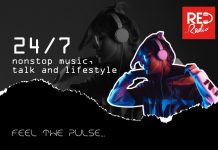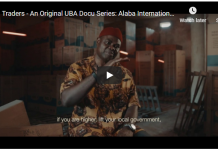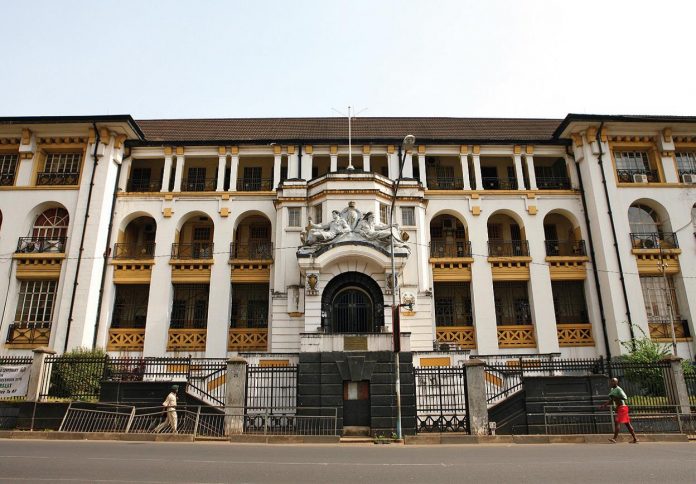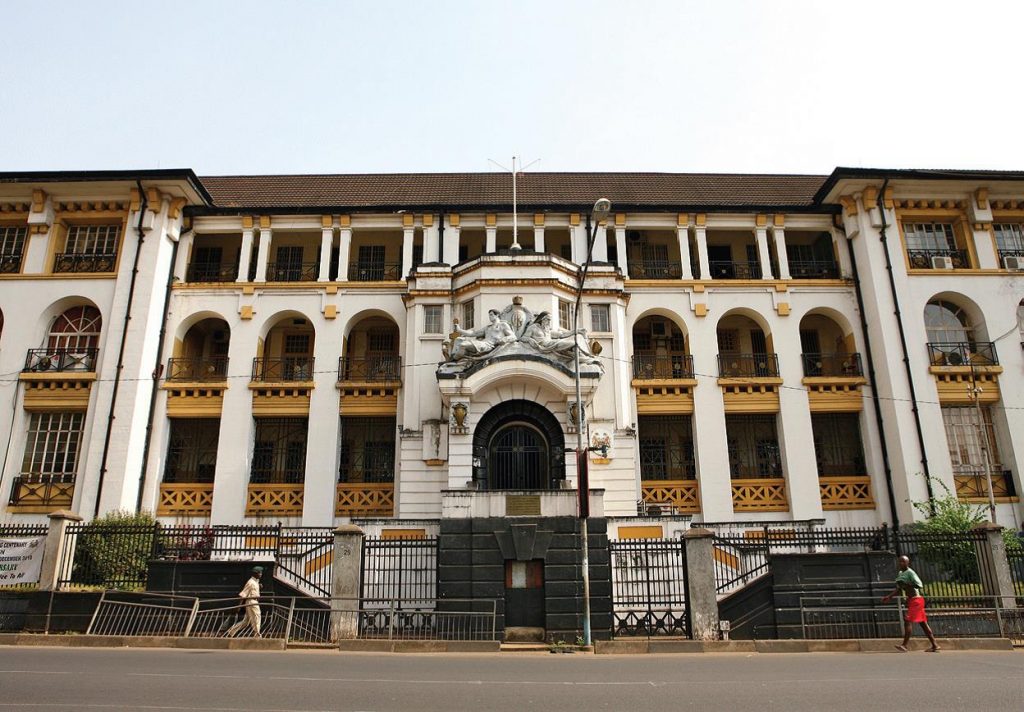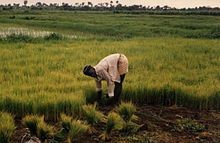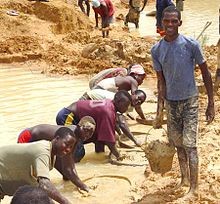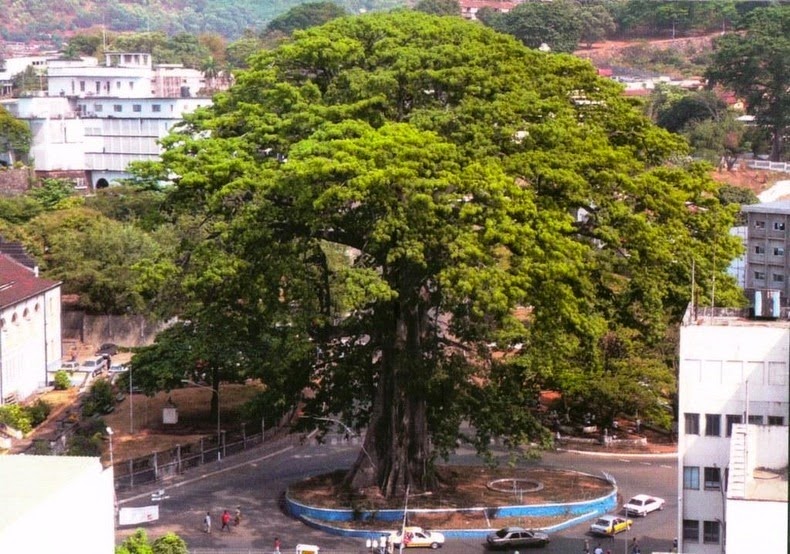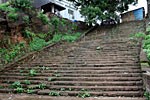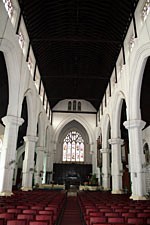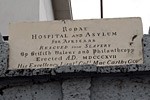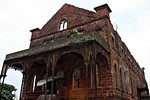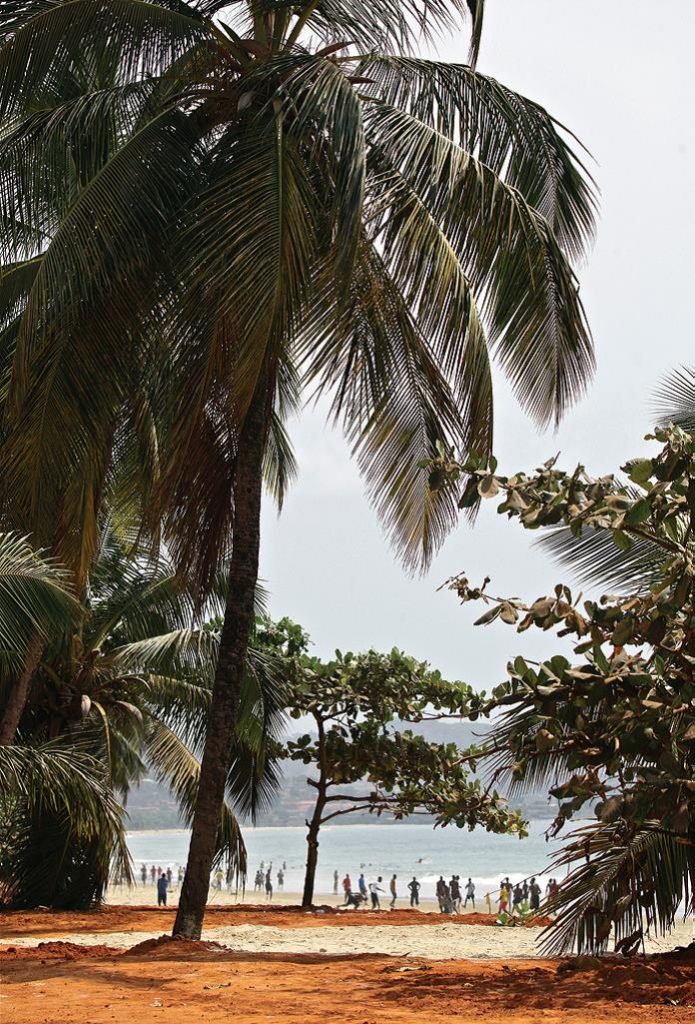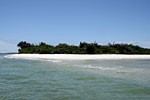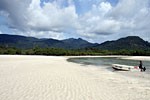Serra lyoa
The Land that We Love
The
Sierra Leone Supreme Court in the capital Freetown,
the highest and most powerful court in the country
Sierra Leone Supreme Court in the capital Freetown,
the highest and most powerful court in the country
Country Profile
The name
“Sierra Leone” dates back to 1462, when Portuguese explorer Pedro da
Cintra, sailing down the West African coast, saw the tall mountains rising up
on what is now the Freetown Peninsula, and called them the “Lion
Mountains,” or ” Serra Lyoa .”
“Sierra Leone” dates back to 1462, when Portuguese explorer Pedro da
Cintra, sailing down the West African coast, saw the tall mountains rising up
on what is now the Freetown Peninsula, and called them the “Lion
Mountains,” or ” Serra Lyoa .”
At this time, the country was
inhabited by numerous politically independent native groups. Several different
languages were spoken, but there was a commonality of religion. In the coastal
rainforest belt, there were Bulom speakers. From the Sherbro and Freetown
estuaries, the Loko speakers. In the north of the Freetown
estuary to the Little Scarcies, are dominated by Temne
speakers. They are also present at the mouth of the Scarcies
and also inland. Limba, is spoken farther up the Scarcies.
inhabited by numerous politically independent native groups. Several different
languages were spoken, but there was a commonality of religion. In the coastal
rainforest belt, there were Bulom speakers. From the Sherbro and Freetown
estuaries, the Loko speakers. In the north of the Freetown
estuary to the Little Scarcies, are dominated by Temne
speakers. They are also present at the mouth of the Scarcies
and also inland. Limba, is spoken farther up the Scarcies.
In the
hilly savannah north
were the Susu and Fula. The
Susu traded regularly with the coastal peoples along the river valley routes
bringing: salt, clothes (woven by the Fula), good quality iron work, and some
gold.
hilly savannah north
were the Susu and Fula. The
Susu traded regularly with the coastal peoples along the river valley routes
bringing: salt, clothes (woven by the Fula), good quality iron work, and some
gold.
Geography
Sierra Leone is located on the West Coast of
Africa, North of the Equator. It has a land area of 27,699 square miles (71,740
square kilometres). Sierra Leone is
bounded by Guinea, to the North, and Northeast, Liberia, to the South, and Southeast,
and the Atlantic Ocean, to the West. There are a wide variety of ecological and
agricultural zones to which people have adapted. Starting in the West, Sierra
Leone has some 250 miles (400 kilometres) of coastline, giving it both
bountiful marine resources and attractive tourist sites.
Africa, North of the Equator. It has a land area of 27,699 square miles (71,740
square kilometres). Sierra Leone is
bounded by Guinea, to the North, and Northeast, Liberia, to the South, and Southeast,
and the Atlantic Ocean, to the West. There are a wide variety of ecological and
agricultural zones to which people have adapted. Starting in the West, Sierra
Leone has some 250 miles (400 kilometres) of coastline, giving it both
bountiful marine resources and attractive tourist sites.
The climate is tropical, with two major seasons
influencing the agriculture. The rainy season starts from May to November,
followed by the dry season from December to May, which includes the harmattan,
which brings in the cool, dry winds from the Sahara Desert. The capital, Freetown,
sits on a coastal peninsula, situated next to the world’s third largest natural
harbour. This prime location historically made Sierra Leone the centre of trade
and colonial administration in the region.
influencing the agriculture. The rainy season starts from May to November,
followed by the dry season from December to May, which includes the harmattan,
which brings in the cool, dry winds from the Sahara Desert. The capital, Freetown,
sits on a coastal peninsula, situated next to the world’s third largest natural
harbour. This prime location historically made Sierra Leone the centre of trade
and colonial administration in the region.
The exportation of slaves remained a major business
in Sierra Leone from the late 15th century to the mid 19th century. It is
estimated that 74,000 slaves were exported annually from West Africa, about
38,000 by British firms in 1789. The
transatlantic slave trade was banned by the British in 1807, but illegal slave
trading continued for several decades after that.
in Sierra Leone from the late 15th century to the mid 19th century. It is
estimated that 74,000 slaves were exported annually from West Africa, about
38,000 by British firms in 1789. The
transatlantic slave trade was banned by the British in 1807, but illegal slave
trading continued for several decades after that.
Languages
Although, English is the official language spoken
at schools, government administration and the media, Krio, is the
most widely spoken in virtually all parts of Sierra Leone. It is the language
of the Krio People of Sierra Leone, derived from English and several indigenous African
languages. The Krio language is spoken by 90% of the country’s population and
unites all the different ethnic groups,
especially in their trade and interaction with each other.
at schools, government administration and the media, Krio, is the
most widely spoken in virtually all parts of Sierra Leone. It is the language
of the Krio People of Sierra Leone, derived from English and several indigenous African
languages. The Krio language is spoken by 90% of the country’s population and
unites all the different ethnic groups,
especially in their trade and interaction with each other.
Demographics
and Culture
and Culture
As of 2013, Sierra Leone is officially projected
with a population of 6,190,280 and an annual growth rate of 2.2%. The country’s
population is mostly young, with 41.7% under 15, and rural. A total of 62% of
people live outside the cities. However, as a result of migration to the cities,
the population is becoming more urban with an estimated 2.9% growth rate of
urbanisation per annum. Population density varies greatly within the country.
The Western Area Urban District, including Freetown, the capital
and largest city, has a population density of 1,224 persons per square km
whereas the largest district Koinadugu, has a density of 21.4 persons per square km.
with a population of 6,190,280 and an annual growth rate of 2.2%. The country’s
population is mostly young, with 41.7% under 15, and rural. A total of 62% of
people live outside the cities. However, as a result of migration to the cities,
the population is becoming more urban with an estimated 2.9% growth rate of
urbanisation per annum. Population density varies greatly within the country.
The Western Area Urban District, including Freetown, the capital
and largest city, has a population density of 1,224 persons per square km
whereas the largest district Koinadugu, has a density of 21.4 persons per square km.
Sierra Leone
is made up of an indigenous population from 18 ethnic groups. The Temne
in the North and the Mende in the South are the largest. There are
also the Krio people, the descendants of freed
slaves who returned to Sierra Leone from Great Britain,
North America
and slave
ships captured on the high seas. In addition, there are also the Lebanese,
Indians,
and Europeans
residing as minorities in the country.
is made up of an indigenous population from 18 ethnic groups. The Temne
in the North and the Mende in the South are the largest. There are
also the Krio people, the descendants of freed
slaves who returned to Sierra Leone from Great Britain,
North America
and slave
ships captured on the high seas. In addition, there are also the Lebanese,
Indians,
and Europeans
residing as minorities in the country.
In the past, Sierra Leoneans were
noted for their educational achievements, trading activity, entrepreneurial
skills, and arts and crafts work, particularly woodcarving.
Many are part of larger ethnic network extending into several countries, which
link West African states in the area.
noted for their educational achievements, trading activity, entrepreneurial
skills, and arts and crafts work, particularly woodcarving.
Many are part of larger ethnic network extending into several countries, which
link West African states in the area.
Food
Rice is the staple food of
Sierra Leone and is consumed at virtually every meal. Rice is prepared in
different ways, and topped with a variety of sauces made from some of Sierra
Leone’s favourite toppings, including potato leaves, cassava leaves, crain crain, okra soup, fried fish and groundnut stew.
Sierra Leone and is consumed at virtually every meal. Rice is prepared in
different ways, and topped with a variety of sauces made from some of Sierra
Leone’s favourite toppings, including potato leaves, cassava leaves, crain crain, okra soup, fried fish and groundnut stew.
Rice farming in Rolako
Also along the street of towns and cities, one can
find foods consisting of fruit, vegetables and snacks such as fresh mangoes,
oranges, pineapple, fried plantain, ginger beer, fried
potato, fried cassava with pepper sauce; small bags of popcorn or peanuts,
bread, roasted corn, or skewers of grilled meat or shrimp.
find foods consisting of fruit, vegetables and snacks such as fresh mangoes,
oranges, pineapple, fried plantain, ginger beer, fried
potato, fried cassava with pepper sauce; small bags of popcorn or peanuts,
bread, roasted corn, or skewers of grilled meat or shrimp.
Poyo is a popular Sierra Leonean
drink. It is a sweet, lightly fermented palm wine,
and is found in bars in towns and villages across the country. Poyo bars are
areas of lively informal debate about politics, football, entertainment and other issues.
drink. It is a sweet, lightly fermented palm wine,
and is found in bars in towns and villages across the country. Poyo bars are
areas of lively informal debate about politics, football, entertainment and other issues.
Economy
Sierra Leone
is slowly emerging from a protracted civil war and is showing signs of a
successful transition. Investor and consumer confidence have continued to rise, adding impetus to the country’s
economic recovery. There is greater freedom of movement and the successful
re-habitation and resettlement of residential areas.
is slowly emerging from a protracted civil war and is showing signs of a
successful transition. Investor and consumer confidence have continued to rise, adding impetus to the country’s
economic recovery. There is greater freedom of movement and the successful
re-habitation and resettlement of residential areas.
Rich in minerals, Sierra Leone has relied on
mining, especially diamonds, for its economic prosperity. The country is among
the top ten diamond producing nations. Mineral exports remain the main foreign currency earner.
Sierra Leone is a major producer of gem-quality diamonds. Though rich in
diamonds, it has historically struggled to manage their exploitation and
export.
mining, especially diamonds, for its economic prosperity. The country is among
the top ten diamond producing nations. Mineral exports remain the main foreign currency earner.
Sierra Leone is a major producer of gem-quality diamonds. Though rich in
diamonds, it has historically struggled to manage their exploitation and
export.
Sierra Leone
is estimated to produce diamonds worth US$250 million to $300 million annually.
Formal exports of diamonds have dramatically improved since the civil war, with
efforts to improve the management of diamond exports having some success. In
October 2000, a UN-approved certification system for exporting diamonds from
the country was put in place and led to a dramatic increase in legal exports.
is estimated to produce diamonds worth US$250 million to $300 million annually.
Formal exports of diamonds have dramatically improved since the civil war, with
efforts to improve the management of diamond exports having some success. In
October 2000, a UN-approved certification system for exporting diamonds from
the country was put in place and led to a dramatic increase in legal exports.
Sierra Leone has one of the world’s largest
deposits of Rutile, a titanium ore used
as paint pigment and welding rod
coatings. The country recently discovered crude oil, and this is expected to
increase the current GDP of $2.2Billion by more than 50% as soon as exploration
commences. Since independence, the Government of Sierra Leone has encouraged
foreign investment. Investors are
protected by an agreement that allows for arbitration under the 1965 World Bank
Convention. Legislation provides for transfer of interest, dividends, and
capital.
deposits of Rutile, a titanium ore used
as paint pigment and welding rod
coatings. The country recently discovered crude oil, and this is expected to
increase the current GDP of $2.2Billion by more than 50% as soon as exploration
commences. Since independence, the Government of Sierra Leone has encouraged
foreign investment. Investors are
protected by an agreement that allows for arbitration under the 1965 World Bank
Convention. Legislation provides for transfer of interest, dividends, and
capital.
About two-thirds of the population engages in subsistence agriculture, which accounts for 52.5% of
national income. The government has made efforts to increase food and cash crop production
and upgrade small farmer skills.
national income. The government has made efforts to increase food and cash crop production
and upgrade small farmer skills.
SITES OF
SIERRA LEONE
SIERRA LEONE
The 200 year
old Cotton Tree
old Cotton Tree
This
majestic tree stands in the centre of the oldest part in Freetown, and is the
most visible landmark in the city. Though, its exact age is unknown, it has
undisputedly stood here for over 200 years. It is believed by some to have been
the resting place for the black poor when they arrived in Sierra Leone in 1787.
They apparently rested and prayed underneath the shade of the tree. The Nova
Scotians upon arrival in 1792 are also said to have sung “Return ye,
ransomed sinners home” at this site. Contrary views however hold that, the
tree associated with these settlers is some distance away.
majestic tree stands in the centre of the oldest part in Freetown, and is the
most visible landmark in the city. Though, its exact age is unknown, it has
undisputedly stood here for over 200 years. It is believed by some to have been
the resting place for the black poor when they arrived in Sierra Leone in 1787.
They apparently rested and prayed underneath the shade of the tree. The Nova
Scotians upon arrival in 1792 are also said to have sung “Return ye,
ransomed sinners home” at this site. Contrary views however hold that, the
tree associated with these settlers is some distance away.
The
Cotton Tree is synonymous with Freetown and has inspired many works of art. In
fact, the Visit Sierra Leone logo pays homage to the Cotton Tree. It is also
the home of bats and vultures. Cotton trees in general, are associated with
myths and mysticisms in Sierra Leone. In the dry season, and harmattan, it
sheds its leaves, but in the rains the tree can be admired in all its
splendour. Its magnetic pull makes it an attractive sight for visiting
tourists.
Cotton Tree is synonymous with Freetown and has inspired many works of art. In
fact, the Visit Sierra Leone logo pays homage to the Cotton Tree. It is also
the home of bats and vultures. Cotton trees in general, are associated with
myths and mysticisms in Sierra Leone. In the dry season, and harmattan, it
sheds its leaves, but in the rains the tree can be admired in all its
splendour. Its magnetic pull makes it an attractive sight for visiting
tourists.
The Wharf Steps And Old Guard House
These flights of stone steps are
one of the stone architectures erected during the governorship of Governor
Charles Macarthy. They lead down from Wallace Johnson Street, and were
completed in 1818. They are often wrongly referred to as the “Portuguese
Steps”. The Guard House at the top of the steps was built in 1819. The Steps
and Guard House are however in urgent need of refurbishment.
one of the stone architectures erected during the governorship of Governor
Charles Macarthy. They lead down from Wallace Johnson Street, and were
completed in 1818. They are often wrongly referred to as the “Portuguese
Steps”. The Guard House at the top of the steps was built in 1819. The Steps
and Guard House are however in urgent need of refurbishment.
St George’s Cathedral
In the
drive to make the Sierra Leone Colony a Christian community, Governor Maxwell
sent a memo to the Secretary of State for the colonies requesting the
construction of a church to serve as a place of worship for the citizens. The
foundation was laid in 1817 by Governor MacCarthy and construction was complete
11 years later well over budget and time.
drive to make the Sierra Leone Colony a Christian community, Governor Maxwell
sent a memo to the Secretary of State for the colonies requesting the
construction of a church to serve as a place of worship for the citizens. The
foundation was laid in 1817 by Governor MacCarthy and construction was complete
11 years later well over budget and time.
As the
head church of a diocese including: The Gambia, the Gold Coast, Lagos, the
Islands of Madiera, the Canaries, Mauritania and Morocco, it was the place of
worship for the crème de la crème of society, and was also the venue of worship
for major State functions. Some of the busts and plaques on display in the
church include: that of Reverend William Garnon, Thomas Fowell Buxton,
Africanus Beale Horton and James “Holy” Johnson.
head church of a diocese including: The Gambia, the Gold Coast, Lagos, the
Islands of Madiera, the Canaries, Mauritania and Morocco, it was the place of
worship for the crème de la crème of society, and was also the venue of worship
for major State functions. Some of the busts and plaques on display in the
church include: that of Reverend William Garnon, Thomas Fowell Buxton,
Africanus Beale Horton and James “Holy” Johnson.
The Gateway To The Old King’s Yard
After the
Abolition Act had come into effect and Sierra Leone had become a British
Colony, the Navy were mostly involved in trying to intercept the still on-going
slave traffic. One of the most effective vessels charged with this
responsibility was, ironically, a former slave vessel, the Black Joke, formerly
called the Henriquita.
Abolition Act had come into effect and Sierra Leone had become a British
Colony, the Navy were mostly involved in trying to intercept the still on-going
slave traffic. One of the most effective vessels charged with this
responsibility was, ironically, a former slave vessel, the Black Joke, formerly
called the Henriquita.
Captured
vessels were brought to Sierra Leone, where an Admiralty Court had been set up
to deal with the legal aspects including, issues around the liberation of the
slaves, and condemnation of the vessels.
vessels were brought to Sierra Leone, where an Admiralty Court had been set up
to deal with the legal aspects including, issues around the liberation of the
slaves, and condemnation of the vessels.
The
rescued slaves were landed at King Jimmy Wharf and taken to a compound
constructed for them. This site was referred to as the King’s Yard where they
could be accessed and housed until plans had been made for their resettlement. Many
of them were in need of medical help. The King’s Yard was also known as an
Asylum. Popular figures to have passed through “The Asylum” include Samuel
Ajayi Crowther and John Ezzidio. The Gateway to the King’s Yard now leads to a
part of the Connaught Hospital and Sight Savers.
rescued slaves were landed at King Jimmy Wharf and taken to a compound
constructed for them. This site was referred to as the King’s Yard where they
could be accessed and housed until plans had been made for their resettlement. Many
of them were in need of medical help. The King’s Yard was also known as an
Asylum. Popular figures to have passed through “The Asylum” include Samuel
Ajayi Crowther and John Ezzidio. The Gateway to the King’s Yard now leads to a
part of the Connaught Hospital and Sight Savers.
Old Fourah
Bay College
Bay College
Old
Fourah Bay College is probably Freetown’s most famous institution; it is the
oldest university in West Africa. In its former splendour, Sierra Leone became
known as the “Athens of West Africa” as scholars from all over Africa
travelled to Sierra Leone for further education. Samuel Ajayi Crowther, the
college’s first student, later became the first home-grown Bishop of West
Africa.
Fourah Bay College is probably Freetown’s most famous institution; it is the
oldest university in West Africa. In its former splendour, Sierra Leone became
known as the “Athens of West Africa” as scholars from all over Africa
travelled to Sierra Leone for further education. Samuel Ajayi Crowther, the
college’s first student, later became the first home-grown Bishop of West
Africa.
BEACHES & RESORTS
The
beaches here are absolutely beautiful, and each of these (and there’s plenty of
them) seems to serve up something different, from the black sand at York Beach
to the white sand at River Number 2. The beaches are at the very centre of
Sierra Leone’s offering to tourists.
beaches here are absolutely beautiful, and each of these (and there’s plenty of
them) seems to serve up something different, from the black sand at York Beach
to the white sand at River Number 2. The beaches are at the very centre of
Sierra Leone’s offering to tourists.
Turtle Islands
A group of eight islands off the
southwest peninsular, the Turtle Islands are idyllic and are inhabited by
fishing communities. They are remote and hard (and potentially expensive) to
get to. It can take at least three hours from Freetown by speedboat. If you do
make it to Bonthe, one of the Islands, then it is recommended that you charter
a speedboat from the Bonthe Holiday Village. There is a basic Conservation
Society guesthouse where a tourist can stay, or pitch a tent. A boat trip to
various islands is recommended as is swimming and fishing with local fishermen.
The water (and air!) is clean and fresh which makes swimming a truly
pleasurable experience.
southwest peninsular, the Turtle Islands are idyllic and are inhabited by
fishing communities. They are remote and hard (and potentially expensive) to
get to. It can take at least three hours from Freetown by speedboat. If you do
make it to Bonthe, one of the Islands, then it is recommended that you charter
a speedboat from the Bonthe Holiday Village. There is a basic Conservation
Society guesthouse where a tourist can stay, or pitch a tent. A boat trip to
various islands is recommended as is swimming and fishing with local fishermen.
The water (and air!) is clean and fresh which makes swimming a truly
pleasurable experience.
Sulima
This is
between the Moa and Mano Rivers. Access is not great and is believed to be
easier from the Liberia side of the border. The Sulima beaches are also believed
to offer surf-quality waves of about 11km in length.
between the Moa and Mano Rivers. Access is not great and is believed to be
easier from the Liberia side of the border. The Sulima beaches are also believed
to offer surf-quality waves of about 11km in length.
Freetown Peninsula
The
beaches are at the very centre of Sierra Leone’s offering to tourists. Probably
offering the greatest potential in the tourism industry, the beaches along the
Freetown Peninsula are a sight to behold.
beaches are at the very centre of Sierra Leone’s offering to tourists. Probably
offering the greatest potential in the tourism industry, the beaches along the
Freetown Peninsula are a sight to behold.




